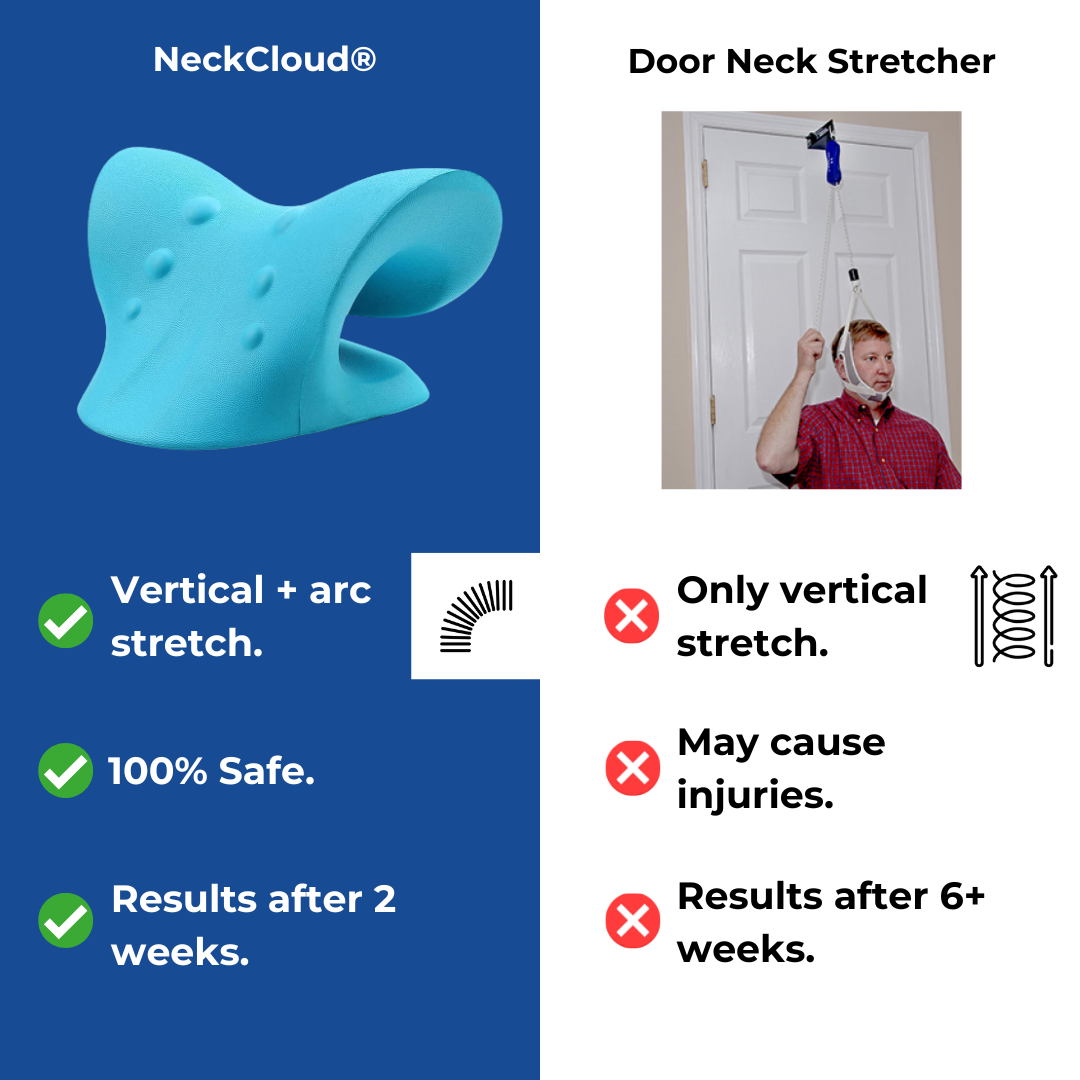Improve Your Posture and Reduce Neck Discomfort with the Neck Cloud
Improve Your Posture and Reduce Neck Discomfort with the Neck Cloud
Blog Article
Neck Discomfort in the Workplace: Identifying Risk Variables and Implementing Ergonomic Solutions
Neck pain in the office is a prevalent issue that can impact worker wellness and productivity. By recognizing the various threat factors adding to neck pain and executing ergonomic options, companies can create an extra conducive workplace. Recognizing these factors is critical in creating targeted strategies to relieve discomfort and avoid future injuries. Attending to ergonomic issues not only improves staff member wellness yet additionally promotes general work contentment and efficiency.
Common Root Causes Of Neck Discomfort
Neck pain in the work environment is a widespread concern that can be connected to numerous usual causes. In addition, repeated movements such as constant flexing, twisting, or getting to can additionally add to neck pain over time.

Ergonomic Danger Elements
Poor functional designs in the office can considerably add to neck pain amongst employees. Variables such as improper workdesk elevation, inadequate chair support, and awkward positioning of computer system displays can all play a role in the growth of neck pain. When workers are forced to sit for prolonged periods ready that strain their neck muscular tissues, it can cause rigidity, pain, and much more severe musculoskeletal concerns gradually.
Additionally, bad ergonomic methods can lead to workers embracing awkward positions while working, such as craning their necks to see a computer display or getting to uncomfortably for a computer mouse or keyboard. neck cloud. These repetitive motions and abnormal placements can put unnecessary anxiety on the neck and bordering muscular tissues, leading to pain and decreased productivity

Workdesk Setup Recommendations
When establishing a desk in the workplace, it is important to pay focus to the comfort designs of the environment. To minimize the risk of neck pain and pain, there are numerous workdesk arrangement referrals that staff members need to take into consideration. To start with, ensure that the computer system display is placed at eye degree to find out here now stop stressing the neck by searching for or down. The key-board and mouse ought to be placed at a height where the elbows are bent at a 90-degree angle to promote proper wrist alignment. their explanation Additionally, the chair elevation need to permit the feet to relax level on the flooring with upper legs alongside the ground.
It is also important to have adequate lighting to minimize eye stress, as squinting or leaning onward can bring about neck stress. Arrange the desk format to maintain regularly made use of items within arm's reach, limiting the demand for repetitive turning or getting to activities. By executing these workdesk arrangement suggestions, employees can develop a more ergonomic work space that supports neck wellness and internet decreases the threat of establishing occupational neck pain.
Extending and Exercise Tips
To preserve flexibility and minimize muscle tension in the office, incorporating extending and workout routines can be beneficial for general well-being and efficiency. Straightforward desk-friendly stretches can help relieve neck pain and stop rigidity. Neck rolls, shoulder shrugs, and gentle side-to-side neck stretches work in easing stress. Additionally, including exercises like chin tucks, shoulder blade squeezes, and top back stretches can aid enhance muscular tissues that support great posture.
It is important to take time-outs throughout the day to perform these workouts. Establishing pointers or utilizing apps that trigger activity can aid develop a normal extending regimen. It is very important to pay attention to your body and avoid overstretching, especially if you are new to these exercises. Consistency is key, so objective to integrate stretching and exercise into your daily work routine. By prioritizing these activities, you can improve your physical well-being, reduce the risk of neck discomfort, and boost your total productivity in the workplace.
Relevance of Normal Breaks
In a fast-paced work atmosphere where demands can contribute to physical stress like neck pain, establishing a routine that emphasizes the importance of regular breaks is critical (neck cloud). Taking normal breaks throughout the day is essential for alleviating and protecting against neck discomfort. Extended periods of resting or repeated jobs can cause muscle stress and tightness in the neck and shoulders. By incorporating time-outs into the job routine, staff members can minimize the risk of creating neck pain and boost overall convenience and productivity.
Normal breaks permit workers to rest their muscular tissues, stretch, and alter settings, avoiding stiffness and advertising much better blood circulation. Urging workers to take short breaks every 30-60 minutes can help in reducing the accumulation of tension in the neck and shoulders. These breaks can also offer as a chance for workers to exercise relaxation methods or mild neck stretches, even more advertising bone and joint health. Executing a society that values and focuses on normal breaks can have a considerable effect on decreasing neck pain and enhancing total health in the workplace.
Verdict
Finally, attending to ergonomic risk aspects and applying proper workstation arrangements are essential in minimizing neck pain in the work environment. By promoting good position, supplying adequate support, and encouraging normal breaks and stretches, companies can develop a much healthier and a lot more effective job atmosphere for workers. Prioritizing worker well-being through ergonomic services is essential to avoid discomfort and enhancing general work environment satisfaction.
Neck pain in the work environment is a widespread problem that can impact employee health and efficiency. By determining and addressing these usual causes of neck discomfort in the work environment, employers can take aggressive steps to create a much more ergonomic and comfy work environment for their workers.
Poor functional designs in the workplace can dramatically contribute to neck discomfort among staff members. By carrying out these desk arrangement suggestions, employees can develop a more ergonomic workspace that sustains neck health and reduces the threat of establishing work-related neck discomfort.
Neck rolls, shoulder shrugs, and gentle side-to-side neck stretches are effective in eliminating stress.
Report this page